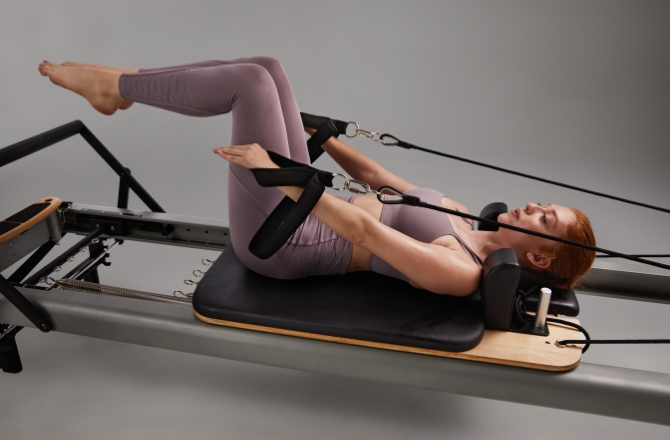
What Does Pilates Do for Your Body?

Pilates has become a popular workout concept in the last few years, and it’s not hard to see why. A unique exercise style, pilates combines a variety of training concepts that bring benefits to health, fitness and everyday life. Regardless of your fitness level, this style of movement remains low impact and can be tailored to your needs. A key component in our fitness at FS8, pilates can promote strength while also helping those in a recovery period. To understand more about pilates and what this exercise can do for you, read our breakdown below.
What is Pilates?
Pilates is a form of low impact exercise with a focus on whole body alignment; so how does pilates work, and what defines this training concept? There are two broad styles of pilates that work the body through resistance, stretching, and slow, controlled movements.
- Mat pilates is a floor-based exercise that works the core, legs and lower and upper back muscles using your body weight to create resistance.
- Reformer pilates uses a ‘reformer bed’ with a spring system that creates resistance that can be increased or decreased as needed.
Pilates can be beneficial for anyone, but its low impact nature means it’s a particularly valuable exercise style for people recovering from injury. If you’re asking why do pilates, read on for all the answers.
What are the benefits of Pilates?
Health and lifestyle factors can significantly improve with weekly exercise, so can day-to-day movement. Pilates is based on principles of body alignment, stretch and resistance, which have a variety of health and fitness advantages – so what does pilates do to your body?
- Increases core strength and muscle tone
- Supports posture and balance
- Eases aches and helps to prevent injury
- Improves mobility and flexibility
-
Promotes stress relief
Most of these benefits relate to each other in some way or another, so let’s unpack what pilates does to your body and how each of these benefits are related.
Strength at the core
When we think about ‘what muscles does pilates work’ – abs come to mind. While pilates has a strong focus on the stomach area, core strength isn’t just about strong abdominal muscles. Body alignment and stability are also key components in building a strong core and thankfully, pilates combines all three. Through resistance training, pilates can contribute to whole body toning and conditioning for a strong presence overall.
Posture and balance
How does pilates work to support posture and balance? Well, pilates is all about maintaining proper alignment through slow, controlled movements. Improving posture and building better balance are natural consequences of this kind of exercise and can provide their own broader benefits.
- Improving posture by exercising with proper form and good alignment can help to reduce the severity of body pain.
- Building balance with resistance exercise can improve control and stability through movement and can help with headaches and earaches.
If you’re interested in developing your balance overall, find out how to improve balance with yoga and pilates.
Prehabilitation
In terms of what pilates does to your body, pain reduction and injury management are major benefits. Not only can pilates support you in recovering from an injury, but it can also help prevent them in the first place. This active approach is called ‘prehabilitation’ and pilates can play a big role by engaging underused muscles and utilising the body’s full range of motion. Pilates also supports body systems that help hold you up, like abdominal muscles and the pelvic floor. Strengthening these parts of the body can lead to a decrease in overall body aches, back pain and menstrual discomfort.
Mobility and flexibility
Stretch, resistance, and slow, controlled movements are a key focus in pilates. These elements of exercise can help enhance flexibility and mobility, which can payoff in your daily life – making it easier to complete tasks that involve squatting, reaching, and lifting.
- Mobility refers to the range of motion at the joint – supported by exercises that take the body through a range of movement.
- Flexibility refers to the lengthening of muscles through a range of motion – and can be developed through stretch and resistance in pilates.
Stress Relief
It’s a well-known fact that exercise can support your mental health by promoting the release of endorphins. So, what does pilates do to support mental health? This form of exercise can help you manage the effects of anxiety, depression, and fatigue – by increasing focus and calming down the body overall through mindful movement. While pilates can be incorporated into any focussed workout, a class environment also adds a layer of community to support mental health. FS8 workouts remix pilates, tone and yoga in a supportive group environment so you can work up a sweat in an inclusive space.

